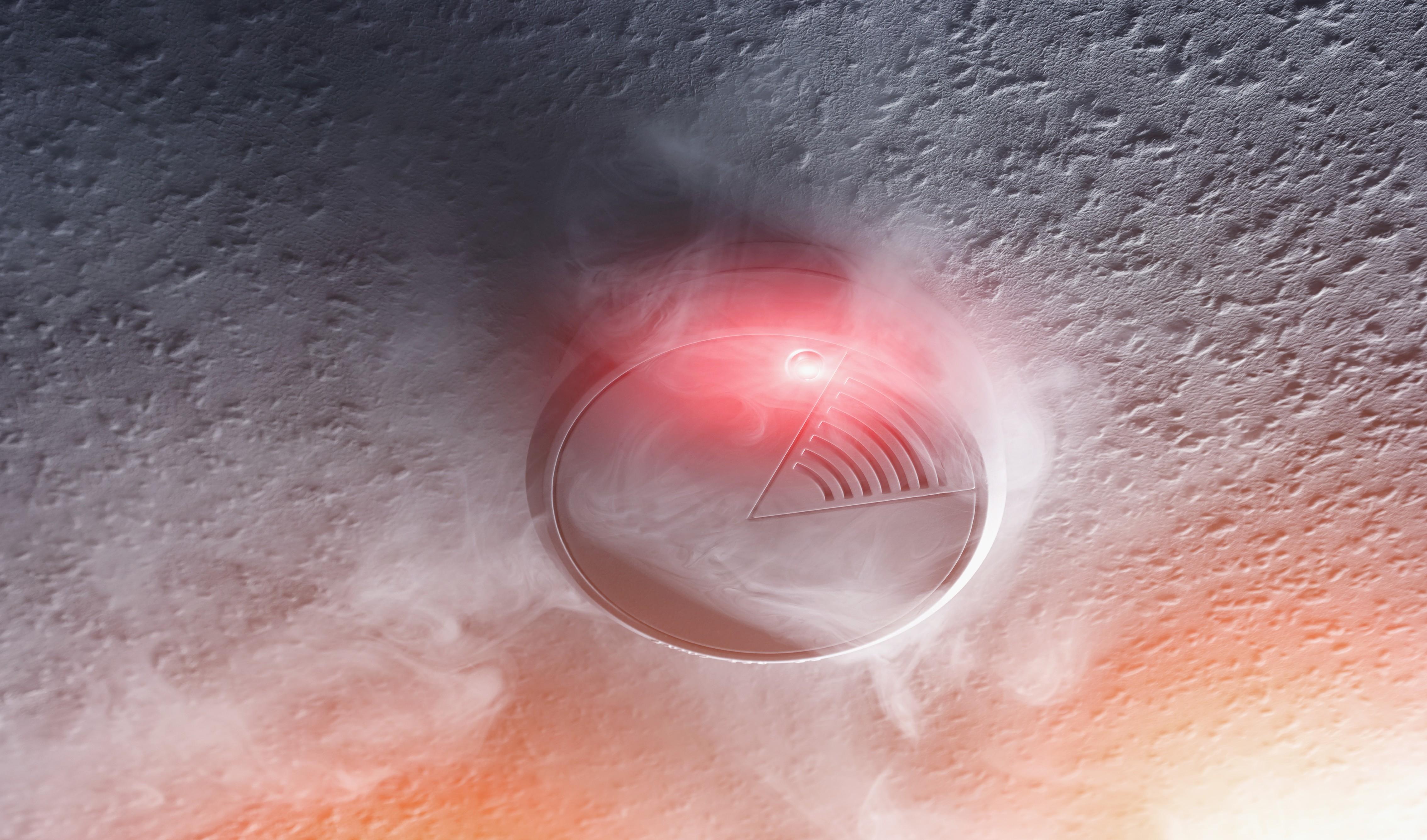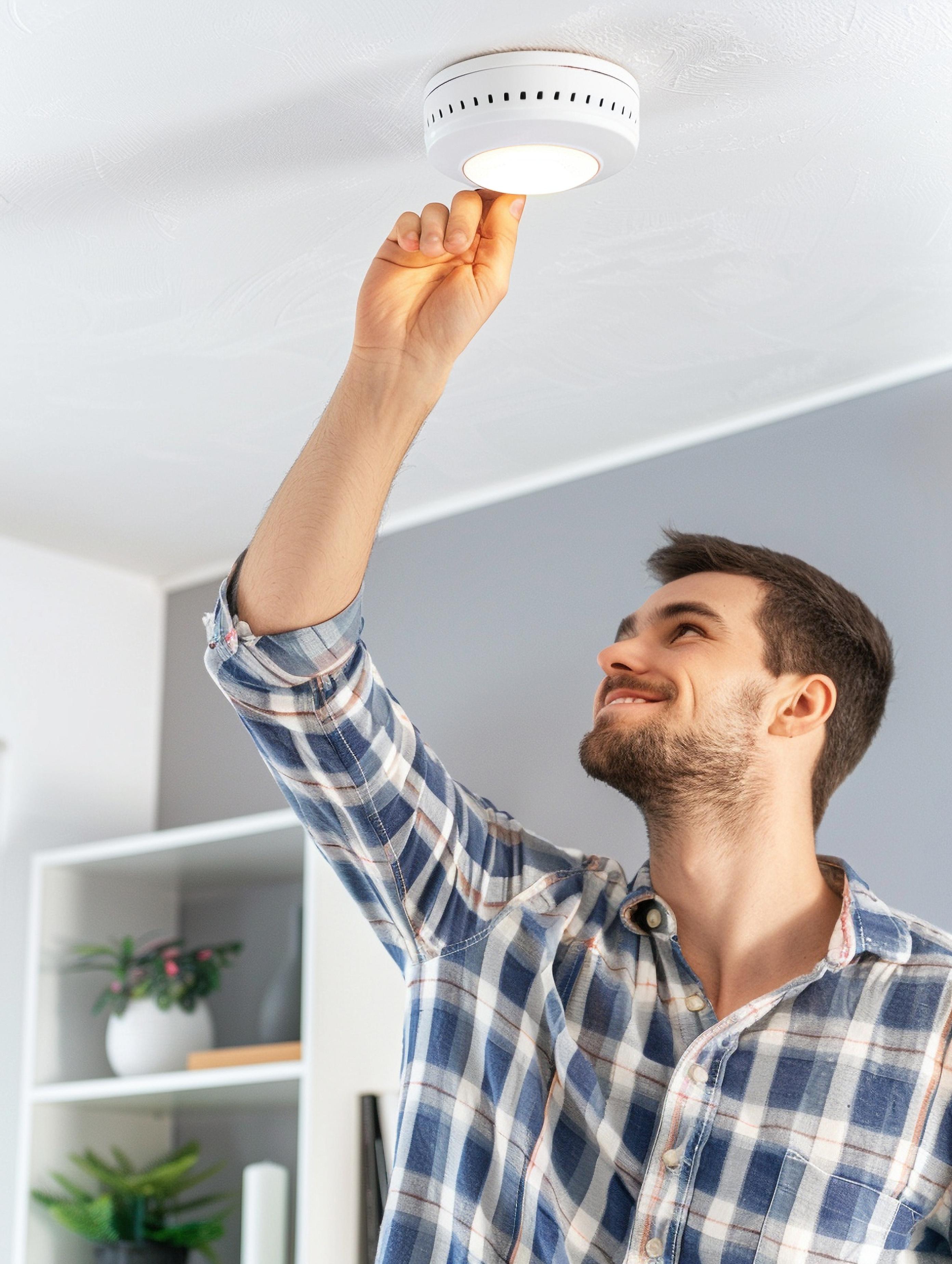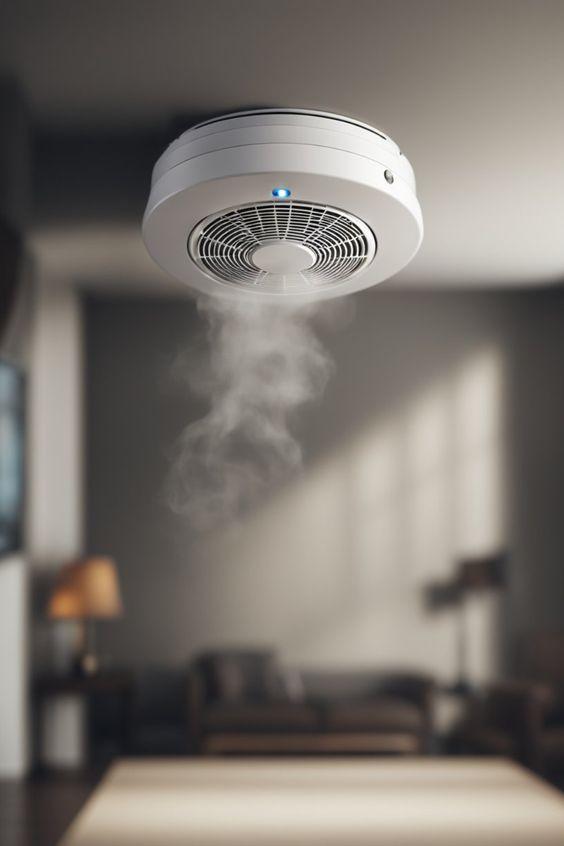



Table of Contents
- How to Maintain Smoke Detectors
- Benefits of Maintaining Smoke Detectors
- Recommended Frequency for Testing
- Essential Tips for Proper Maintenance
- Additional Tips
- Benefits of Smoke Detectors with Carbon Monoxide Detection
- Key Features To look For in A Smoke Detector
- Conclusion
- Faq's
Imagine the sound of a smoke detector beeping in the dead of night, signaling the presence of a fire that could have devastating consequences. The thought of losing a loved one, a home, or a lifetime of memories to a preventable tragedy is a chilling reality that many of us face every day.
But what if we told you that there is a simple, yet crucial step you can take to safeguard your life and the lives of those around you? It's not about installing a new alarm system or investing in expensive safety equipment. It's about maintaining the smoke detectors that are already in place.
How to Maintain Smoke Detectors
Maintaining smoke detectors is crucial to ensure they function effectively in detecting fires and providing early warnings. This can be ensured through regular maintenance and testing which will help prevent false alarms, ensure the devices are in good working condition, and provide peace of mind for homeowners and occupants. In this article, we will discuss the importance of maintaining smoke detectors, the recommended frequency for testing, and some essential tips for proper maintenance.
 How To Maintain Smoke Detectors
How To Maintain Smoke Detectors
Benefits of Maintaining Smoke Detectors
Simply installing smoke detectors is not enough; regular maintenance and testing are crucial to ensure they function optimally. Over time, dust, dirt, and other contaminants can accumulate inside the device, obstructing the detection capability. By regularly cleaning the smoke detectors, you can prevent false alarms or, even worse, missed alarms during a real fire event.
Furthermore, ensuring that the batteries are in good working condition is crucial since dead or weak batteries can render the detector useless.
Recommended Frequency for Testing
The recommended testing frequency varies depending on the type of smoke detector you have. For ionization smoke detectors, which are more responsive to fast, flaming fires, testing once a month is recommended. On the other hand, photoelectric smoke detectors, known for their sensitivity to slow, smoldering fires, should also be tested monthly. Additionally, it is essential to test the functionality of the devices after any renovations or electrical work in your home, as these activities can interfere with the smoke detectors' performance.
Essential Tips for Proper Maintenance
 Tips for Proper Maintenance of Smoke Detectors
Tips for Proper Maintenance of Smoke Detectors
Here are some essential tips to ensure optimal performance and maintenance of smoke detectors:
- Use a vacuum cleaner or a soft brush to remove dust or debris that might affect their functionality.
- Press the designated test button and confirm that the alarm sounds loud and clear, try to do this every month.
- Replace the batteries at least once a year or as soon as the low battery signal is triggered, usually indicated by a chirping sound.
- Ensure that the smoke detectors are not obstructed by furniture, curtains, or any other objects that can hinder their ability to sense smoke.
- Replace smoke detectors that are over ten years old, as their efficiency diminishes over time.
Additional Tips
Dealing with False Alarms
If your smoke detector starts beeping sporadically or giving false alarms, it could indicate a problem. Dust and debris can accumulate within the detector, affecting its performance. Regularly vacuum or gently blow out any dust that may have gathered. If false alarms persist, it might be time to replace the unit.
Troubleshooting and Repairs
If your smoke detector starts beeping sporadically or giving false alarms, it could indicate a problem. Dust and debris can accumulate within the detector, affecting its performance. Regularly vacuum or gently blow out any dust that may have gathered. If false alarms persist, it might be time to replace the unit.
Benefits of Smoke Detectors with Carbon Monoxide Detection
In addition to traditional smoke detection, many advanced smoke detectors offer the added benefit of carbon monoxide (CO) detection.
- Carbon monoxide is a colorless, odorless gas that can be produced by faulty heating systems, gas stoves, and other fuel-burning appliances. Breathing in high levels of CO can be extremely dangerous and even fatal. By installing smoke detectors with carbon monoxide detection capabilities, you are providing an extra layer of protection for your family.
- Smoke detectors with carbon monoxide detection can detect both types of hazards, providing early warning signs of potential dangers. This allows occupants to take immediate action, reducing the risk of injury or loss of life.
- Smart smoke detectors with carbon monoxide detection are more accurate than traditional detectors, reducing false alarms and ensuring that occupants are alerted only when a real threat is present.
- Many smart smoke detectors with carbon monoxide detection can be monitored remotely, allowing occupants to receive alerts and notifications on their smartphones. This ensures that occupants are always informed and prepared in case of an emergency.
- Smoke detectors with carbon monoxide detection provide enhanced safety for occupants, especially in homes with attached garages, fireplaces, or natural gas appliances. These detectors can detect carbon monoxide leaks before they become life-threatening, ensuring that occupants are protected from this invisible threat.
- Installing smoke detectors with carbon monoxide detection is often required by building and safety codes, ensuring that homes and offices meet minimum safety standards.
Key Features To look For in A Smoke Detector
 Source: Pinterest
Source: Pinterest
When selecting a smoke detector, it is advisable to opt for a Smart Smoke detector as it offers a wide range of easy to use features.
Some of the features to consider are:
Detection Technology
Look for detectors that use advanced detection technologies such as ionization, photoelectric, or dual-sensor technology to ensure accurate detection of smoke and fire.
Carbon Monoxide Detection
Consider detectors that include carbon monoxide detection capabilities to safeguard against this deadly gas.
Remote Monitoring
Opt for detectors that can be monitored remotely through a mobile app or web interface to ensure real-time alerts and notifications.
Interconnectivity
Choose detectors that can be integrated with other smart devices in your home or office, such as thermostats, security systems, and smart locks, to create a comprehensive safety ecosystem.
Self-Test Feature
Ensure the detector has a self-test feature that allows you to double-check its functionality and battery levels.
Battery Life
Consider detectors with long-lasting batteries or those that can be powered by a power source, ensuring continuous operation even during power outages.
Compatibility
Verify that the detector is compatible with your existing smart home system and other devices to ensure seamless integration.
Voice Alerts
Look for detectors that offer voice alerts, allowing you to receive notifications through voice assistants like Amazon Alexa or Google Home.
Wireless Connectivity
Opt for detectors with wireless connectivity to ensure easy installation and flexibility in choosing optimal locations.
Professional Monitoring
Consider detectors that offer professional monitoring services, which can alert emergency services in the event of a fire.
Additional Features
Some detectors may offer additional features such as temperature monitoring, humidity detection, or smart home integration, which can enhance their functionality and convenience.
Conclusion
Maintaining smoke detectors is a crucial aspect of ensuring their effectiveness in detecting fires and providing early warnings. By following the recommended maintenance procedures and testing frequencies, you can significantly enhance the safety of your home or office environment. Remember, maintaining smoke detectors is a small price to pay for the invaluable protection they offer.
explore further
Latest from Contemporary ideas
More from Innovations
Resources
Dwello, for every home buyer, is a way to go from 'I feel' to 'I know', at no extra cost.




